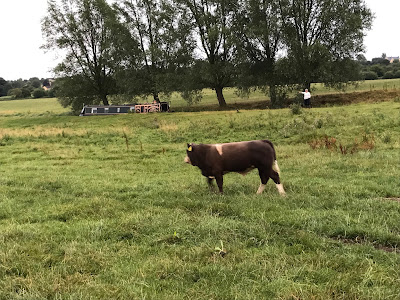I had taken for granted that, except for special circumstances, boats
PASS ON THE RIGHT (i.e. port-to-port). This accords with the
international rules of navigation and all current and recent guidance confirms this (e.g. from BW, CRT, IWA, EA) .
I had also assumed that this guidance was both universal and historic. However, I recently obtained a 1950 1st edition of the Inland Waterways of Great Britain & Northern Ireland by Lewis A Edwards and a section in the book led me to consider that some navigations required boats to PASS ON THE LEFT, perhaps as recently the nineteen-forties.
In the appendix to the book there is a note on Navigation Hints for Pleasure Craft. The note provides interesting insights into the days when our canals and rivers were first and foremost commercial highways. It provides lots of helpful advice on how to ensure working boats are not impeded; one can easily imagine the frustration of working boatmen with amateur crews, particularly at locks.
Concerning boats passing, the advice is clear:
"On our rivers, and over most of the canal system, ... the passing rule is KEEP RIGHT; but there are exceptions to this such as the Worcester & Birmingham Canal, where the rule is KEEP LEFT"
The writer goes on to advise pleasure craft crews to ask boatmen. This came as a surprise to me since I had not read anything similar.
The book is edited by Lewis Edwards who is credited as being Honorary Secretary of the
Inland Waterways Association. It largely consists of factual material but the note about navigation was written by none other than Tom Rolt. The advice originally came from a leaflet originally published by the IWA. Tom Rolt was Honorary Secretary of the IWA until 1950, the year of the book's publication and Lewis Edwards was in the process of taking over his role. Later in the year considerable changes occurred in the IWA with
"Civil War" breaking out. Rolt and others resigned.
Some questions arise from the note:
Is there other evidence for this navigation advice?
Does the particular reference to the W & B come because Rolt was moored up for several years at Tardibigge?
Did canal amalgamation, and ultimately nationalisation, bring uniformity or were there other reasons?
When did uniformity occur?
I can recommend the book as offering insights into an interesting period of waterways history; on the cusp between commercial and leisure boating. It is easier to navigate (pun intentional) through its chapters to find a particular waterway than Bradshaw, which annoyingly groups navigations by their ownership (mostly railway companies) and not by geography or given name. My copy was not expensive, obtained via eBay and is in good condition.


















































